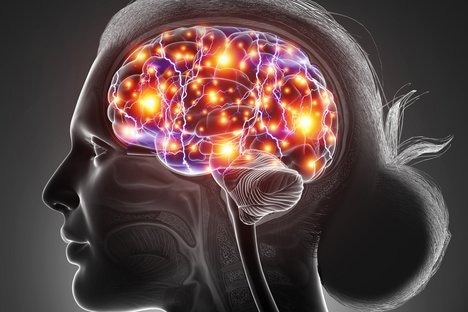A research group from MedUni Vienna’s Center for Brain Research has identified key cells that control data communication between parts of the brain. This discovery lays the groundwork for new therapeutic approaches for neuropsychiatric disorders like schizophrenia and autism, which are characterized by deficient coordination of information flow in the brain.

Image Credit: Medical University Vienna
The research has now been published in the prestigious journal “Science.”
The researchers concentrated their basic research on how the interaction between different brain regions is formulated and how continuously changing streams of information from multiple sources can be handled without errors.
Ece Sakalar, Thomas Klausberger, and Balint Lasztoczi of MedUni Vienna’s Center for Brain Research sought and found solutions in the so-called CA1 area of the hippocampus, a central switchboard in the brain. There, so-called neurogliaform cells merge converging information on the current environment as well as applicable previous experiences without mixing them up.
Until now, science has been in the dark about the function of neurogliaform cells.
In our preclinical experiments, we have now discovered that neurogliaform cells, by briefly inhibiting other cell types, ensure that current perception and memories of past experiences can be processed both separately and also in combination.”
Balint Lasztoczi, Study Author, Medical University Vienna
This allows one to remain aware of what is going on at that moment and what is being recalled while looking at a photograph of one’s grandmother (sensory information) and instantaneously recalling the smell of her homemade cakes (memory).
Traffic light in the flow of information
A functioning nervous system is built on the regulation of ongoing and remembered information as well as the smooth flow of communication between brain areas. This organization is disrupted by a variety of neuropsychiatric disorders, including schizophrenia and autism.
In this sense, the latest MedUni Vienna study results provide hope: By determining the function of neurogliaform cells as traffic lights in the information flow, the scientists are laying the groundwork for the development of new therapeutic approaches.
The researchers intend to evaluate how the activity of neurogliaform cells can be impacted to form the basis for new medicines and treatment techniques for neuropsychiatric disorders like schizophrenia and autism.
Source:
Journal reference:
Sakalar, E., et al. (2022) Neurogliaform cells dynamically decouple neuronal synchrony between brain areas. Science. doi.org/10.1126/science.abo3355.